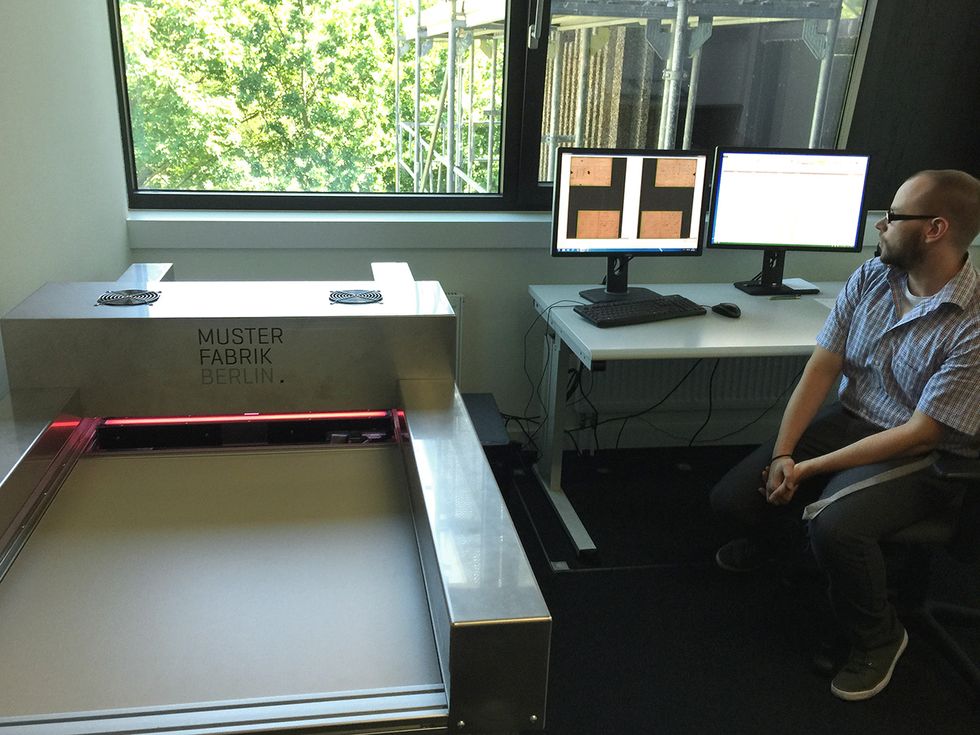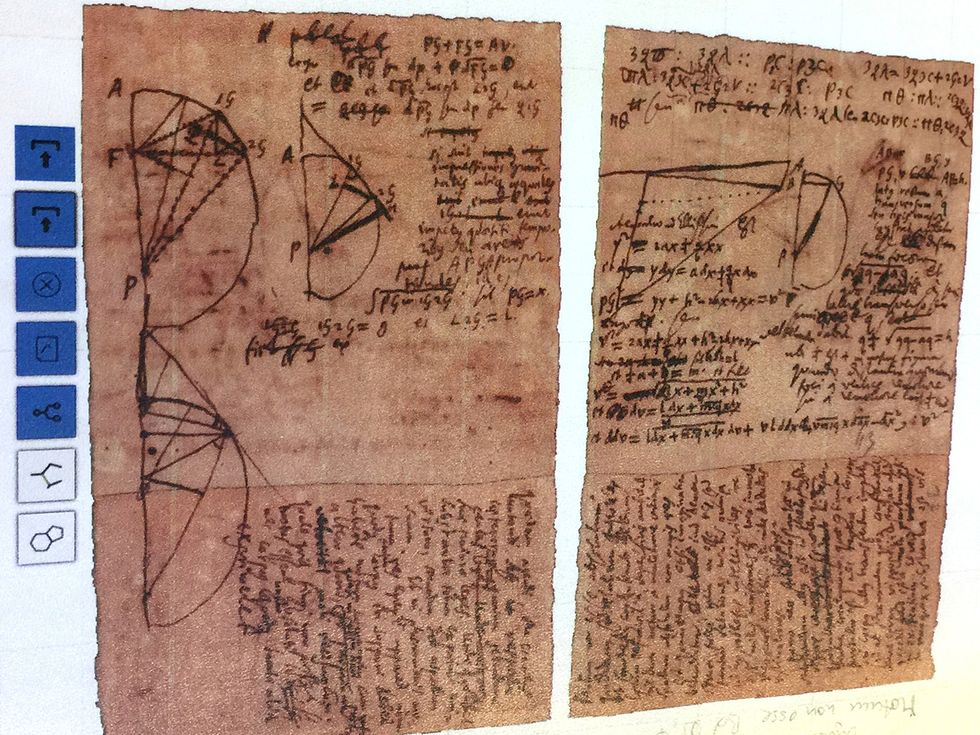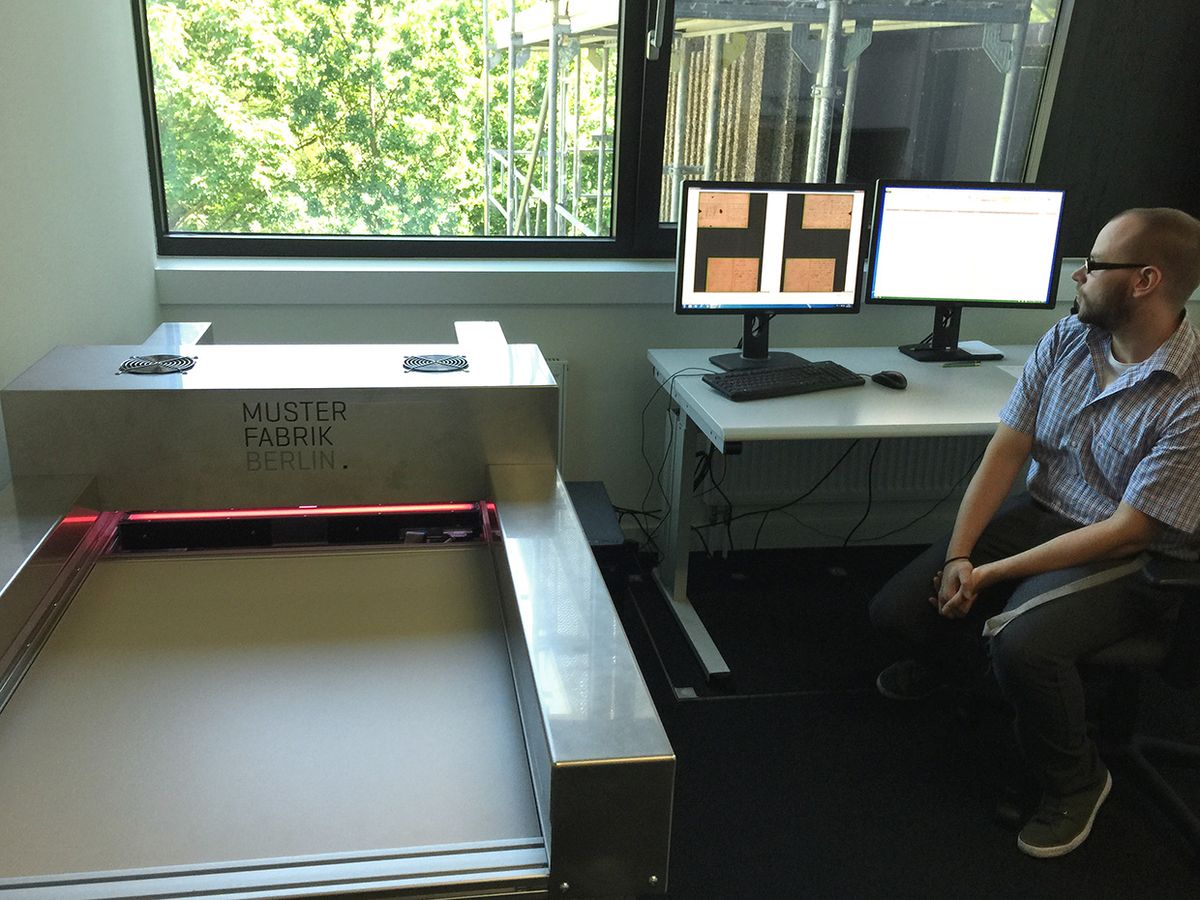
Behind an unmarked door in Hanover, Germany, a bearded young man with stylish glasses and a pierced lip is loading 350-year-old pieces of paper onto glass plates for digitization by a souped-up scanner. These pieces of paper are part of an immense puzzle. If solved, it could give insights into one of the greatest minds of all time: Gottfried Wilhelm Leibniz.
Leibniz independently discovered calculus in the 17th century and made many other contributions to philosophy and mathematics. During his lifetime, he created many notes, but today they are mostly a jumbled mass of snippets. Michael Kempe, research leader at the Leibniz archive, says this was a result of Leibniz’s polymath tendencies. In order to save paper, which at the time was hand pressed and expensive, Leibniz would use the same sheet for all different kinds of writing and drawing. A few lines on metaphysics would sit next to a differential equation, next to a sketch of an optimized windmill. Leibniz would later cut up the notes with scissors and set them aside for grouping by theme. Unfortunately, the ordering of the snippets is long lost.
Now, on the second floor of the Gottfried Wilhelm Leibniz Library, these snippets are being digitally reassembled. Restoring the notes to their original order, researchers on the project say, could go a long way toward a better understanding of the way Leibniz came to his conclusions and establish a clearer timeline for the development of his ideas. The restoration is a collaboration between Fraunhofer IPK (Fraunhofer Institute for Production Systems and Design Technology), archivists and editors at the Leibniz library, and MusterFabrik Berlin, makers of specialized digital scanners.

The software being used to piece the snippets together was first developed to reconstitute files that the East German secret police—the Stasi—kept during the Cold War. In the days surrounding the fall of the Berlin Wall, Stasi agents first tried shredding the files using machines. Then, when the machines jammed from overuse, the agents resorted to tearing files up by hand.
Leibniz’s notes pose a tougher problem, says Fraunhofer’s Bertram Nickolay. Leibniz cut up his notebooks with scissors—leaving a clean edge and corners, often without text bridging from one side of a cut to the other—instead of the ragged edges and bisected text produced by hand shredding. Consequently, MusterFabrik and Fraunhofer IPK developed a special “two-and-a-half-dimension” scanner, which takes eight images per scan, with the snip sitting in a glass tray so that both sides of the page are imaged at the same time. This high level of precision allows a detailed examination of the edges and any marks on the surface of the paper by upgraded matching algorithms.
Siegmund Probst, one of the researchers on the project, demonstrates how it works by pulling up a snippet that introduces a metaphysical notion on the nature of movement, in Leibniz’s barely legible script. Probst points out that on the back side of the page there is an unrelated geographical sketch.
The scanner software matched this piece with another, Probst says. It discovered that the curves in Leibniz’s sketch continue on another piece. “We found that it belongs together with this text, with other differential equations on motion. You can see the ellipse,” he says, pointing to the drawing. “It’s on the motion of heavy bodies and gravitation. Leibniz is trying to figure out the curve of the ellipse with given conditions of motion. Now we know these pages were written about the same time.”
Last August, the team showed off a selection of its results in an exhibition at the library, based on scanning 7,200 math-related snippets and processing the resulting 24 terabytes of data. The project hopes to garner the resources to continue scanning: There are some 92,000 remaining snippets—covering such varied topics as Leibniz’s philosophy, correspondence, and even travel journals—to go.
This article appears in the February 2018 print issue as “Solving Leibniz’s Last Puzzle.”
